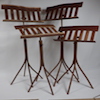i am making or wanting to make a oval top for an end table i am working on,,the table is 24x15so i cut the boards about 18x30 thinking it would give me a little room to play,,,and i watched some you tube videos and i did get the oval made but each side cuts in too soon,, leaving part of each corner knocked off,,,,i guess what i am trying to say is the oval needs to start somewhere past the sides,,if that makes any sense,,lol,,,,this is my first oval and any help would be appreciated




 Reply With Quote
Reply With Quote





